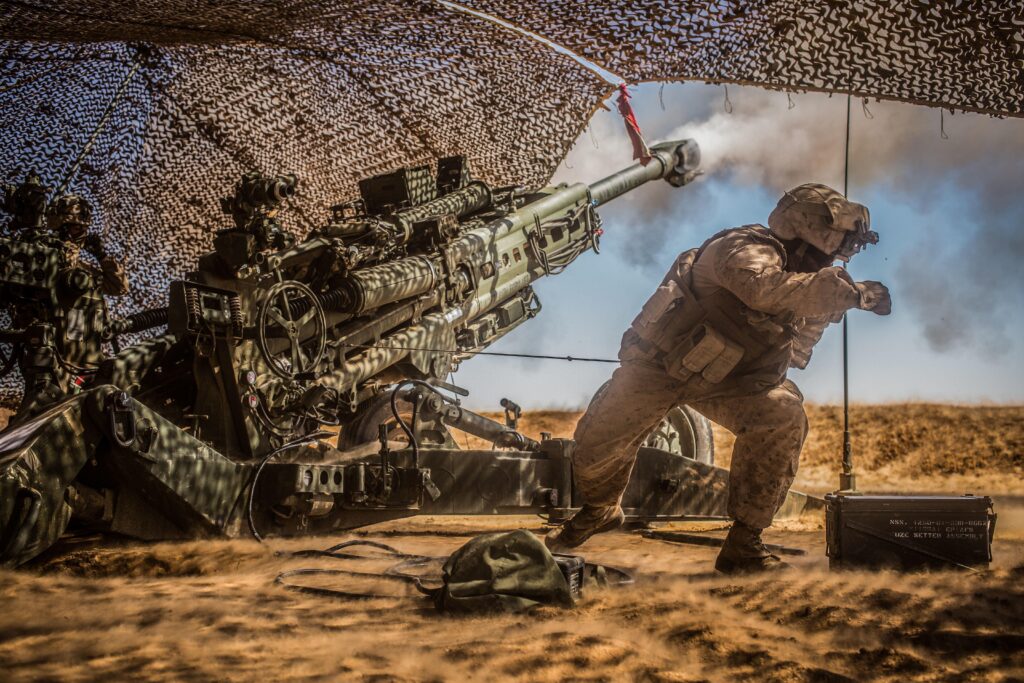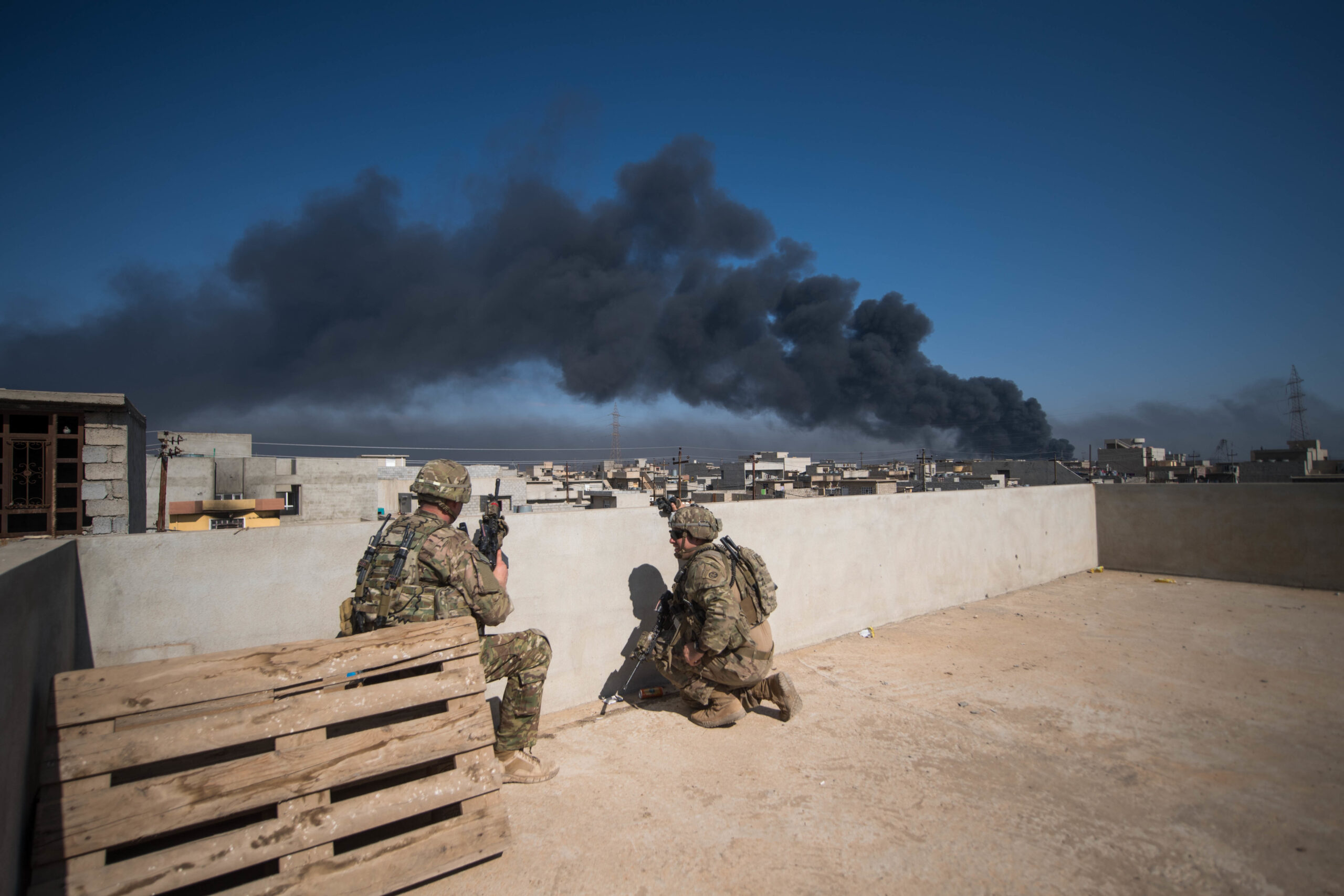Politics, they say, makes strange bedfellows. But it wasn’t politics that brought an unlikely group of military forces together at the battle for the Iraqi city of Mosul between 2016 and 2017 – it was the Islamic State. The band of terrorists, otherwise known as ISIS (or ISIL), captured the Iraqi city in 2014 after a battle that lasted just six days. ISIS fighters then executed captured Iraqi defenders, consolidated their gains, and continued their stunning but tragic advance.

The Battle of Mosul: The Rise of ISIS and the Caliphate
The success of the ISIS offensive in Mosul led its leader, Abu Bakr al-Baghdadi, to declare the beginning of the group’s self-proclaimed caliphate as the leader of Muslims all over the world. He proclaimed Mosul’s Great Mosque of al-Nuri, a unique holy site that was first constructed in the 12th century. The mosque, like tens of thousands of Iraqis, would not survive the Islamic State.
It also led to military interventions by the unlikely (and unofficial alliance) between Kurdish Peshmerga, Russia, Iran, and its Hezbollah allies, as well as the United States, France, the United Kingdom, Canada, Australia, Germany, the Netherlands, and Turkey.
Counteroffensives and Global Efforts
In the immediate aftermath of the fall of Mosul, the United States and Iraqi governments began planning to take it back. By October 2014, the U.S. would launch Operation Inherent Resolve, which flew more than 45,000 sorties against ISIS positions in its first year. At the same time, Kurdish Peshmerga forces began a counteroffensive to liberate surrounding villages and cut ISIS supply lines to Mosul.
The world’s support came pouring in soon after. As the Iraqi Army began preparations to make its assault, suicide bombers struck a Paris suburb, leading French President François Hollande to deploy the aircraft carrier Charles de Gaulle to the Mediterranean Sea and increase the intensity of French airstrikes. Russia, Syria, Iran, and Iraq set up a coalition headquarters in Baghdad to coordinate efforts against the Islamic State in Iraq and Syria. In all, 60 nations were set up in 2015 to defend Iraq against further ISIS gains and push back its advance. Even Saddam Hussein’s Ba’ath Party faithful joined the call for residents of Mosul to rise up against their captors.

The Battle of Mosul: Victory and Aftermath
On October 16, 2016, the Iraqi Army’s attack on Mosul finally began. It got off to a great start but bogged down in the urban combat that followed. Iraqi and Kurdish troops claimed to have captured 77 miles of ISIS-held territory and villages on the first day of fighting. Revolts against ISIS rule broke out in the city but were quickly put down as suicide bombers, improved explosive devices, and oil fires slowed the Coalition’s advance. Since ISIS also controlled a large area, it began counteroffensives of its own from places like Kirkuk, diverting much-needed attention away from the attack on Mosul.

As the Iraqis and Kurds fought to recapture Iraq’s second-largest city, Coalition airstrikes and artillery pummeled ISIS defenses, not only in and around Mosul but across Iraq and Syria. American troops in Iraq numbered some 4,400 at the time, and some came into direct contact with ISIS fighters during the fight for Mosul. After U.S. troops took ineffective mortar fire on the outskirts of the city, they inflicted heavy casualties in turn.
By December 7, 2016, Coalition forces still controlled less than half of Mosul. Building by building, house by house, and airstrike by airstrike, anti-ISIS troops advanced toward the Tigris River that bisected the massive city. It wouldn’t be until January 25, 2017, that the east bank of the Tigris was completely liberated by Iraqi security forces. By March 1, the remaining ISIS fighters inside the city were finally cut off from the rest of Islamic State territory as Coalition forces surrounded Mosul and restored the area to government control.

The battle to retake Mosul and turn the tide against the Islamic State would take two full years, and in that time, the U.S.-led Joint Task Force would kill some 70,000 terrorist fighters in Iraq and Syria. In those two years that ISIS ruled over Mosul, the city’s population fell by one million people as the group persecuted and executed religious and ethnic minorities. At the time of the Islamic State’s greatest expansion, it controlled 90,000 square kilometers of oil-rich Middle Eastern territory, an area roughly the size of Portugal. It also controlled the lives of an estimated eight million civilians.
Without the airpower and training provided by the United States and other Coalition members, it’s unlikely the Iraqi government would have been able to stem ISIS expansion in 2014. It was the world’s largest military operation since the United States invaded Iraq in 2003 and one of the fiercest battles since World War II. Mosul also joined an elite club of historical cities, places like Stalingrad, Hue, and Aleppo, that have been destroyed by combat. The damage done to the city totaled more than 50 billion dollars and included the ISIS demolition of the Great Mosque.
Read About Other Battlefield Chronicles
If you enjoyed learning about the Battle of Mosul, we invite you to read about other battlefield chronicles on our blog. You will also find military book reviews, veterans’ service reflections, famous military units and more on the TogetherWeServed.com blog. If you are a veteran, find your military buddies, view historic boot camp photos, build a printable military service plaque, and more on TogetherWeServed.com today.

0 Comments